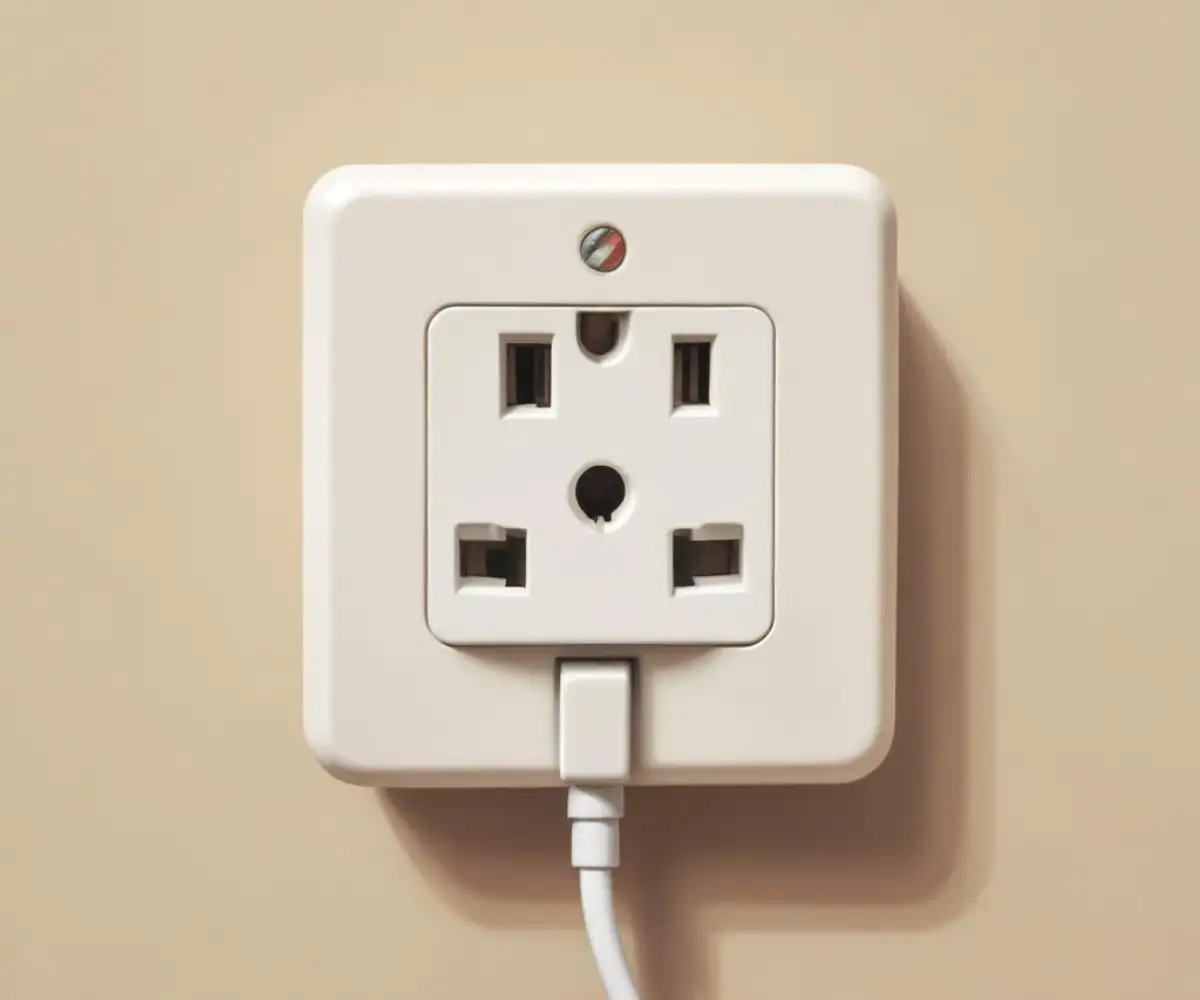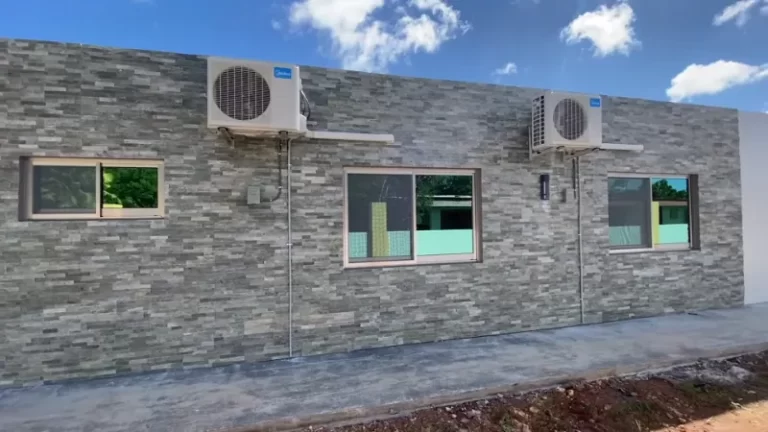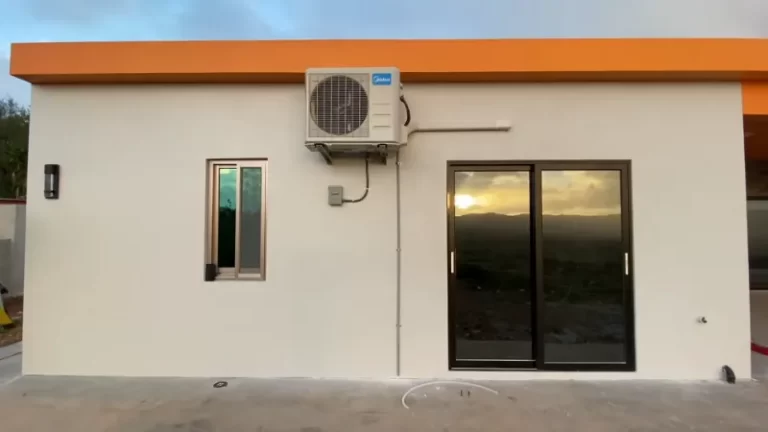2 Prong Air Conditioner: The Shocking Truth & Safe Solutions
You have an older home with two-prong outlets. You just bought a new air conditioner to survive the summer heat, but its plug has three prongs. This is a frustratingly common problem that leaves many homeowners in a dangerous bind.
That third prong is the ground pin, a critical safety feature. Trying to power a heavy-duty appliance like an air conditioner without a proper ground is like driving a car without brakes. You might get away with it for a while, but you are risking a serious disaster.
This article will explain the severe risks of using an ungrounded air conditioner and walk you through the only safe, code-compliant solutions to protect your home, your appliance, and your family.
You'll Learn About
Why Your Ungrounded AC is a Major Safety Risk
Understanding the danger starts with understanding the purpose of that third prong. It’s not just there for show; it’s a direct line of defense against electrical shock and fire.
The Missing Ground: What Does It Actually Do?
Think of the ground wire as an emergency exit for electricity. Under normal conditions, electrical current flows in a closed loop between the two flat prongs (the “hot” and “neutral”).
If a wire comes loose inside your AC unit and touches the metal casing, the entire appliance can become energized. Without a ground wire, that dangerous electricity is trapped, waiting for a path to escape. If you touch the metal frame, your body can become that path, resulting in a severe or even fatal electric shock.
A ground wire provides a safe, low-resistance path for this fault current to travel directly back to the electrical panel, tripping the circuit breaker and shutting off the power instantly.
The Dangers of an Ungrounded Connection
Running a powerful appliance like an air conditioner without a ground connection exposes you to several significant dangers. These are not just theoretical risks; they are the reasons modern electrical codes mandate grounded outlets for major appliances.
The most immediate danger is electric shock. The combination of a powerful motor, complex electronics, and a metal chassis makes an AC unit a prime candidate for electrical faults. A proper ground neutralizes this risk almost completely.
Another major concern is the risk of electrical fire. A short circuit in an ungrounded appliance can cause wires to overheat dramatically, igniting nearby materials like curtains, carpets, or the wall itself. The ground wire helps trip the breaker before this extreme heat can build up.
Finally, a ground connection also protects your air conditioner from damage. Power surges can send a jolt of excess voltage through your wiring. A grounded system directs that surge away from sensitive electronics, while an ungrounded unit takes the full hit, which can easily destroy its circuit boards.
“Solutions” to Avoid: Common but Dangerous Mistakes
When faced with a three-prong plug and a two-prong outlet, many people turn to seemingly easy fixes they find at the hardware store. These “solutions” are incredibly dangerous and should never be used for an air conditioner.
The “Cheater Plug”: Why Adapters Are Not a Real Solution
A three-to-two-prong adapter, often called a “cheater plug,” looks like a simple solution. It allows you to physically plug your three-prong cord into a two-prong outlet. However, it does absolutely nothing to create a ground connection.
Using one of these adapters with a high-amperage appliance like an AC unit completely defeats the most important safety feature built into the machine. You are operating the unit without a safety net, exposing you to the full risk of shock and fire.

Breaking Off the Ground Pin: A Recipe for Disaster
An even more reckless approach is to physically break or cut the ground pin off the air conditioner’s plug. This permanently destroys the appliance’s primary safety mechanism.
Doing this not only creates an immediate and severe safety hazard but also instantly voids your manufacturer’s warranty. If a fire or electrical fault occurs, your insurance company may also deny your claim because the equipment was intentionally modified in an unsafe manner.
Safe and Effective Solutions for Your 2 Prong Outlet Problem
Now that you know what not to do, let’s focus on the correct ways to solve this problem. The right solution will depend on your home’s wiring and your budget, but both options are safe, effective, and compliant with the National Electrical Code (NEC).
The Gold Standard: Installing a Grounded Outlet
The best and most complete solution is to have a qualified electrician replace your old two-prong outlet with a modern, fully grounded three-prong outlet. This involves running a new ground wire from your home’s main electrical panel to the outlet box.
This is the ideal fix because it provides full protection against both electrical shock and power surges. It brings your home’s wiring up to modern safety standards and ensures your air conditioner operates exactly as it was designed to.
A Practical Alternative: GFCI Protection
If running a new ground wire is not feasible due to cost or wall access, the next best solution is to install a Ground Fault Circuit Interrupter (GFCI) outlet. A GFCI is a smart device that constantly monitors the flow of electricity through it.
If it detects a tiny imbalance in the current—such as electricity flowing through a person instead of back through the neutral wire—it shuts off the power in a fraction of a second. While a GFCI does not create a ground, it provides outstanding protection against electric shock.
The NEC permits using a GFCI to replace a two-prong outlet. For safety and code compliance, the outlet must be labeled with a sticker that says “No Equipment Ground.”
When to Choose Which Solution
Deciding between a new grounded outlet and a GFCI outlet comes down to a balance of cost, installation complexity, and the type of protection you need. Both are safe and acceptable solutions for powering your air conditioner.
| Feature | New Grounded Outlet | GFCI Outlet |
|---|---|---|
| Primary Protection | Shock & Surge Protection | Excellent Shock Protection Only |
| How It Works | Provides a safe path for fault current to the earth, tripping the main breaker. | Monitors current flow and shuts off power if a ground fault is detected. |
| Installation Complexity | High (May require running new wires through walls) | Low (Directly replaces the old outlet in the existing box) |
| Typical Cost | $$ – $$$ (Depends heavily on labor and home construction) | $ – $$ (Lower cost for labor and materials) |
| Code Compliance | Fully compliant. The preferred modern standard. | Fully compliant when labeled “No Equipment Ground.” |
Can I Use a Window AC Unit with a Two-Prong Outlet?
The vast majority of new window air conditioners require a dedicated, grounded, three-prong circuit. Their powerful compressors and fans draw a significant amount of electricity, and the manufacturers engineer them to operate only with the safety of a ground connection.
Older homes with two-prong outlets were built long before modern appliances became common. These circuits were not designed to handle the sustained electrical load of an air conditioner. Overloading an old circuit is a serious fire hazard. Sometimes unusual odors can be an early sign of an electrical issue; if you notice something odd, it is worth investigating, just as you would look into why you might be smelling black pepper when there is none around.
Understanding Your Home’s Electrical System
Dealing with outlet issues is a good reminder of the importance of your home’s electrical system. The integrity of this system is critical for your safety. Every component, from the wiring in the walls to the outlets you use daily, plays a role.
Leaving a critical system vulnerable can have serious consequences. For example, if you discovered your roofer left your roof exposed, you would take immediate action to prevent water damage. An unsafe electrical situation deserves the same urgency.
It is crucial that any electrical work is done correctly and to code. The stability and safety of your home depend on the strength of its components, just as knowing how much weight a nail can hold is fundamental to a secure construction project. Always entrust electrical work to licensed professionals.
Frequently Asked Questions (FAQ)
Is it illegal to use a 2-prong adapter for an AC?
While you can buy them easily, using an adapter for a major appliance like an air conditioner is a violation of the National Electrical Code in most jurisdictions. More importantly, it is extremely unsafe and creates a serious risk of fire and electric shock.
My old air conditioner has a two-prong plug. Is it safe?
Older appliances were built to the standards of their time, which did not require grounding. While it may function, it lacks the modern safety features of a grounded unit and carries a higher inherent risk. Upgrading to a modern, grounded air conditioner is highly recommended.
How much does it cost to install a grounded or GFCI outlet?
The cost can vary widely based on your location and the complexity of the job. A simple GFCI outlet replacement might cost between $100 and $200. Running a new ground wire to install a truly grounded outlet is more complex and could cost $200 to $500 or more, depending on the distance to the panel and wall construction. Always get a quote from a licensed electrician.
Your safety is not worth the convenience of a dangerous adapter. When it comes to powering a high-draw appliance like an air conditioner, there are no safe shortcuts. Never modify the plug and never use a cheater adapter.
The only correct course of action is to consult a licensed electrician. They can assess your situation and install a code-compliant grounded outlet or GFCI outlet, ensuring you can cool your home comfortably and, most importantly, safely.


